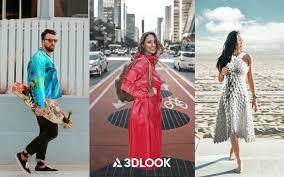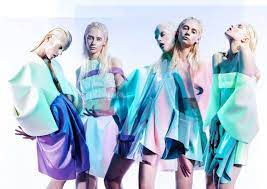Fashion is a fast-moving industry. As consumers become more enabled, they expect brands to adapt to their needs and values.
Brands that embrace digital clienteling are able to offer highly personalized experiences. They can also benefit from new efficiencies thanks to AI technology. This will boost their conversion rates and revenues.

1. Digital IDs
Fashion brands have more information than ever about their consumers’ consumption habits, behavioural trends and decision drivers. But this intelligence is useless if it’s not converted into solid insights and actionable business opportunities.
2. Hyperpersonalization
Hyper-personalization is a new strategy that takes customer data to the next level. It enables brands to deliver content and product recommendations that are relevant for each individual customer at all times.
It goes beyond traditional segmentation, which groups customers into subsets based on common characteristics (e.g. age, gender, location, average spend). With hyper-personalization, marketers dive deeper into the data to create segments of one that are based on individual behaviors and preferences.
However, this requires a lot of first-party data that can be collected in real time across digital and voice experiences. The challenge is that most companies struggle with collecting accurate and actionable data, particularly at pivotal points where the customer transitions from digital to voice. This requires a robust and flexible automated customer engagement platform that can bridge these gaps, carrying current context from channel to channel.
3. Connected Stores
From augmented reality dressing rooms to temperature-changing smart fabrics, fashion brands are adopting innovative technology at a breakneck pace. They’re partnering with technology providers, snapping up startups and building their own tech.
Retailers have long sought to integrate the chief driver of online success – continual data collection that helps improve sales – into physical stores. This new suite of tools called connected stores makes it possible.
In addition to enabling personalization, frictionless experience and visibility, it also provides a powerful source of consumer insight. IoT solutions featuring RAIN RFID, computer vision and other technology bring items and shoppers into the digital age so that retail locations become as data-rich as e-commerce destinations. For example, at the Legend World Wide store in Belgrade, Impinj’s platform captured accurate item and shopper data that was then instantly accessible in PTC ThingWorx.
4. End-to-End Upgrade
The fashion industry needs to embrace new technologies and business models that can respond to constant changes in consumer demand. Profiting from 4IR technologies requires more than just technological innovation itself, it also involves an innovative business model (Teixeira, 2019).
Personalized production demands accurate forecasting of demand at the individual customer level, which is difficult with current technology and requires significant resources to handle.
A misaligned experience can not only damage revenue but also harm a brand’s reputation.
5. Metaverse Reality Check
When referring to the metaverse, it’s important for fashion brands to be precise about what they are talking about. As the term has many different definitions, from virtual reality to blockchain and Web3 technologies – with each presenting its own challenges – it is crucial that fashion marketers understand how they can best leverage this new technology.
For example, fashion brands could launch branded non-fungible tokens (NFTs) for their products in the metaverse, where users can visit online stores to ‘try on’ digital garments.
However, a key issue is that NFTs are not transferable between different metaverse environments, limiting their value needs read more hear.


























